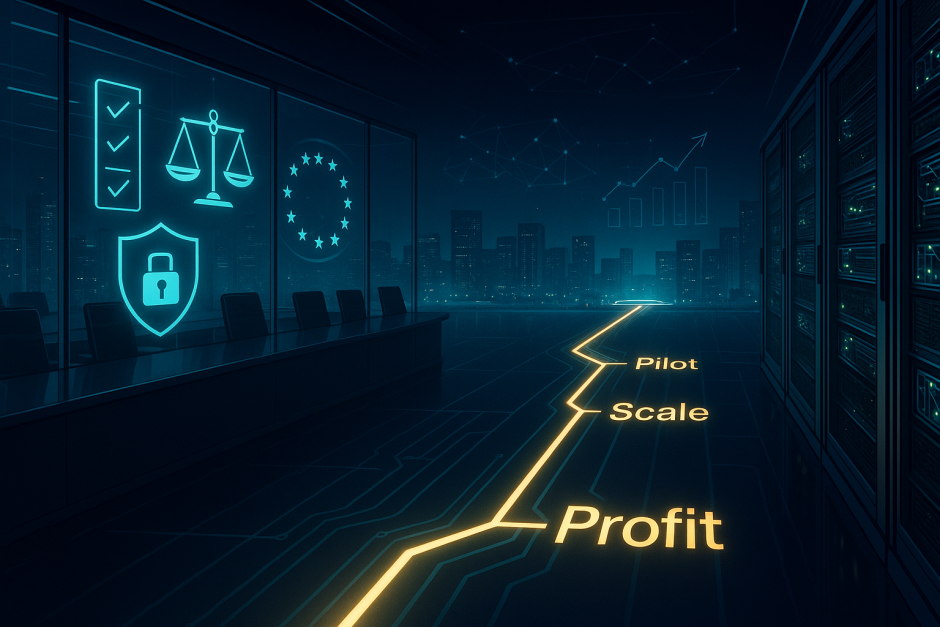Enterprise AI 2025: Regulation, GPUs & the Long Road from POCs to Profit
Introduction
While consumer chatter centers on chatbots and viral videos, the enterprise story is more nuanced: budgets are exploding, governance is tightening, and GPU scarcity is dictating who can scale. Here’s how the B2B side of AI is unfolding in 2025.
1. Adoption Is High—Maturity Is Not
McKinsey’s March survey shows 78 % of companies already apply AI somewhere, yet only 1 % call their deployments “mature” in terms of bottom-line impact.McKinsey & Company
2. Budgets Become Permanent Line Items
A16z’s mid-year CIO poll reveals LLM budgets grew ~75 % YoY and now live in core IT allocations rather than innovation sandboxes—one CIO quipped: “What I spent in 2023, I now spend in a week.”Andreessen Horowitz
3. Use-Case Shift: From Chatbots to “Super-Agents”
McKinsey’s January “Superagency” report argues that next-gen agents—LLMs chained to tools and orchestrated workflows—are the fastest route to ROI, but leadership, not employee readiness, is the bottleneck.McKinsey & Company
4. Infrastructure Arms Race
- NVIDIA Blackwell Ultra systems begin shipping in 2H 2025, promising order-of-magnitude speed-ups for sparse tensor and inference workloads.NVIDIA Newsroom
- JP Morgan projects 5.2 million Blackwell GPUs will ship this year, underscoring demand that dwarfs Ampere and Hopper roll-outs.TweakTown
- OpenAI and Oracle’s new 4.5 GW data-center build signals that even hyperscalers are scrambling for capacity.Reuters
5. Big-Tech CapEx Meets CFO Scrutiny
Despite record spend, analysts still can’t tie generative-AI revenue to the bottom line; Meta’s own filings admit most gains are from old-school ad-targeting models, not GenAI.Financial Times Expect tougher ROI questions as depreciation from 2023-24 GPU splurges hits income statements.
6. Regulatory Reality Check
The EU AI Act is now in force, with July draft guidelines clarifying duties for General-Purpose AI (GPAI) providers—think model cards, incident reporting and “systemic-risk” audits.artificialintelligenceact.eu Full compliance kicks in August 2026, but procurement teams are already baking requirements into RFPs. The upshot: model provenance, sandbox testing, and access-to-weights clauses are becoming standard contract language.Digital Strategy
7. Best-Practice Playbook for 202
- Multi-model architecture. Enterprises now deploy 5+ models in production to trade off cost, latency, and domain fit.Andreessen Horowitz
- SLMs + Knowledge Graphs. Smaller domain models chained with GraphRAG pipelines beat monoliths on accuracy and price for vertical use cases.TechRadar
- GPU hedging. Locking in forward contracts with cloud providers—or experimenting with CPU/FPGA alternatives—has become strategic insurance against accelerator shortages.
- Governance-first rollouts. CEO-level oversight of AI programs correlates most with EBIT impact, per McKinsey’s findings.McKinsey & Company
Conclusion
The enterprise AI landscape in 2025 is equal parts opportunity and operational debt. Leaders who marry ambitious agent roadmaps with sober cost accounting—and who treat compliance as design input, not drag—will be best positioned to convert today’s experimentation into durable competitive advantage by the time the EU’s rules bite in 2026.





